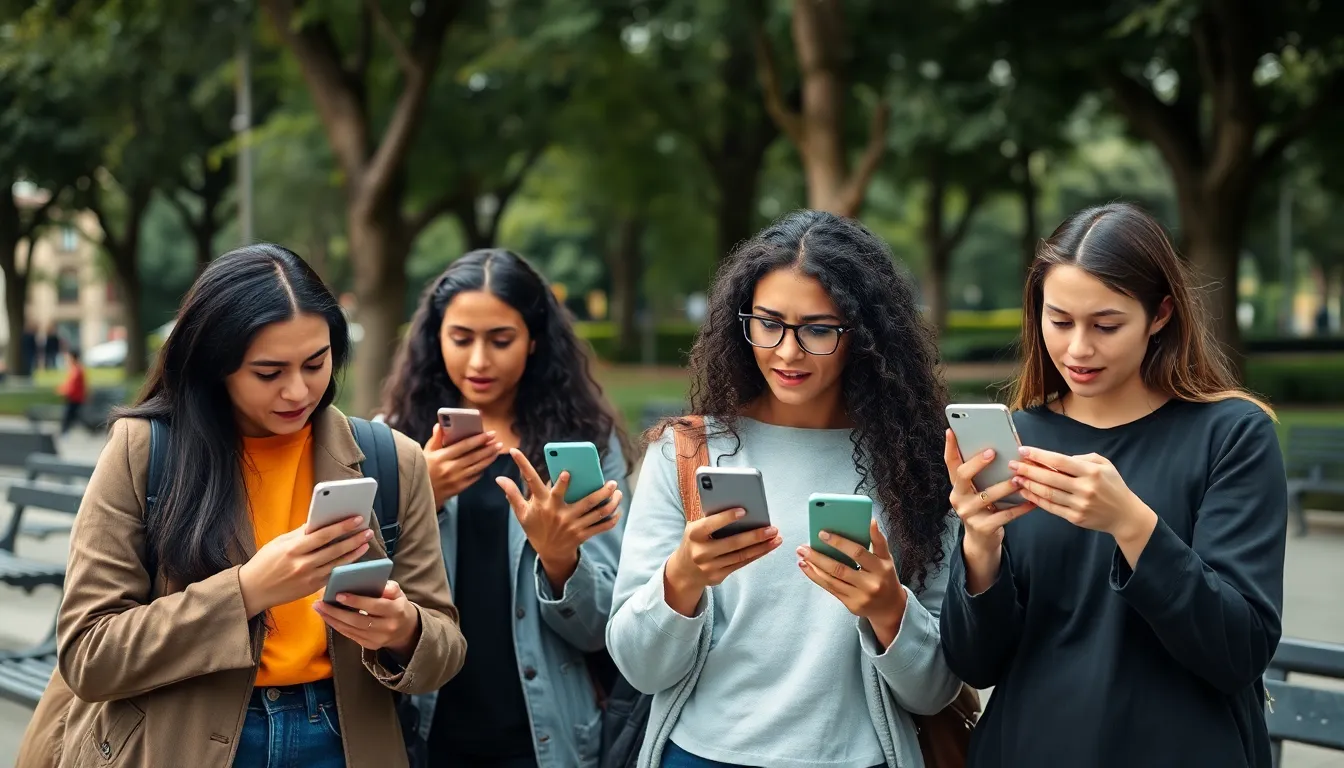Ever felt like your iPhone’s playing a cruel prank on you? You type a heartfelt message to the group chat, hit send, and suddenly it’s like a game of “Guess Who” with each message appearing one by one. It’s enough to make anyone question their sanity—or their tech skills.
Table of Contents
ToggleUnderstanding Group Chat Functionality
Understanding how group messaging works can clarify why messages sometimes send individually. Knowing the mechanics helps users navigate potential issues effectively.
What Is Group Messaging?
Group messaging allows multiple users to communicate simultaneously through one thread. Participants share messages, photos, and videos in real time. Each member receives notifications of new messages, fostering engagement. Group chats often facilitate easier coordination in social or work-related contexts. Emphasis remains on seamless communication for everyone involved.
How Messages Are Sent in iPhone Group Chats
Messages in iPhone group chats utilize either iMessage or SMS/MMS protocols. iMessage, which sends messages over Wi-Fi or cellular data, enables users to send high-quality images and engage in larger conversations. Conversely, if a contact isn’t using iMessage, SMS/MMS protocols are employed, resulting in individual message sending. Network connectivity and device settings significantly influence this messaging behavior. Understanding these factors can assist users in troubleshooting their messaging experience.
Common Reasons for Messages Sending Individually

Multiple factors contribute to messages sending individually in group chats on iPhone. Understanding these issues helps clarify the problem and visualize potential solutions.
Network Issues
Network issues often cause messages to send individually. A weak Wi-Fi or cellular signal hinders connection strength. When an iPhone struggles to maintain connectivity, it defaults to SMS/MMS. SMS/MMS protocols send messages one by one, especially if some group members lack iMessage access. Checking the connection status becomes crucial. Users should also ensure that software is up to date, as outdated versions might impact performance.
Group Settings and Permissions
Group settings and permissions play a significant role in how messages are transmitted. Not all group members may have proper permissions to receive messages through iMessage. If a contact is not saved as a group member or has opted out of iMessage, messages send separately. Users must verify group settings and update contact information accordingly. Adjusting these settings can eliminate communication barriers, making group discussions smoother and more coherent.
Troubleshooting Steps
Addressing the issue of individual message sending in group chats on iPhone involves several straightforward steps.
Check Network Connection
First, ensure the iPhone has a strong network connection. Weak Wi-Fi or cellular signals often lead to problems with message delivery. Users can open settings to check Wi-Fi status or cellular coverage. A slow connection may restrict the ability to send messages via iMessage, causing the iPhone to revert to SMS or MMS. An uninterrupted network is crucial for seamless group chat communication, so users must confirm that their internet is stable.
Review Group Chat Settings
Group chat settings play an essential role in message delivery. Check if all participants are using iMessage; if even one member opts out of iMessage, messages may send individually. Users should navigate to the group chat settings and verify that everyone has proper permissions. Additionally, updating or correcting contact information can simplify communication within the group. Keeping these settings in order helps ensure that messages reach everyone at once.
Update Your iPhone
Updating the iPhone to the latest version can resolve messaging issues. Regular updates include bug fixes and improvements that enhance overall performance. Users can check for updates by going to settings, then selecting General, and finally Software Update. Installing the latest software version helps optimize iMessage functionality, reducing the chances of messages sending one by one. Regular updates support smoother operation in group chat scenarios, enhancing user experience.
When to Seek Further Help
If problems persist despite following troubleshooting steps, further assistance may be necessary. Users can take two distinct avenues for resolution.
Contacting Apple Support
Turning to Apple Support can provide targeted solutions for persistent messaging issues. Expert representatives are available to address specific technical challenges. Users may contact them through the Apple Support app, the website, or by visiting an Apple Store for in-person assistance. A representative can guide users through advanced troubleshooting steps, ensuring no settings are overlooked. Keeping device information handy, like the model and software version, can expedite the support process and lead to quicker resolutions.
Seeking Help from Carrier
In some cases, the user’s carrier might play a crucial role in group messaging behaviors. Carriers manage SMS/MMS protocols and can affect message delivery. Reaching out to the carrier directly can clarify if service issues contribute to the problem. Users should inquire about their messaging services and whether any constraints exist on group messaging. Carrier support can provide guidance or initiate service adjustments, possibly resolving connectivity challenges that disrupt group chats. Knowing the specifics of the user’s plan can significantly enhance the conversation with the carrier.
Experiencing group chat messages sending individually on an iPhone can be frustrating. By understanding the underlying factors like network connectivity and group settings users can take proactive steps to enhance their messaging experience. Ensuring that everyone in the group is on iMessage and that the device is updated can significantly reduce issues. If problems continue despite troubleshooting efforts reaching out to Apple Support or the user’s carrier can provide further assistance. With the right approach users can regain the seamless communication they expect in group chats.



